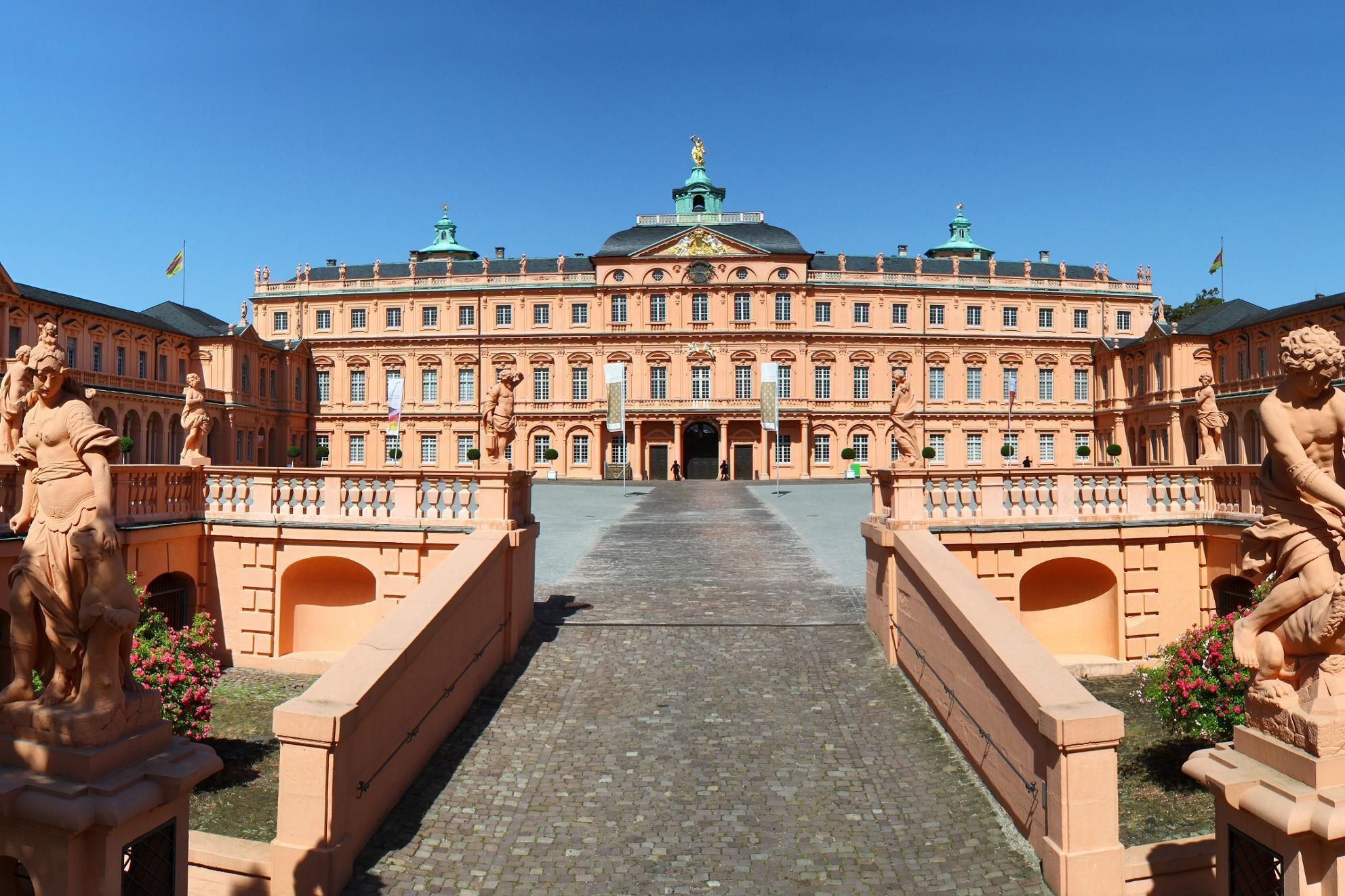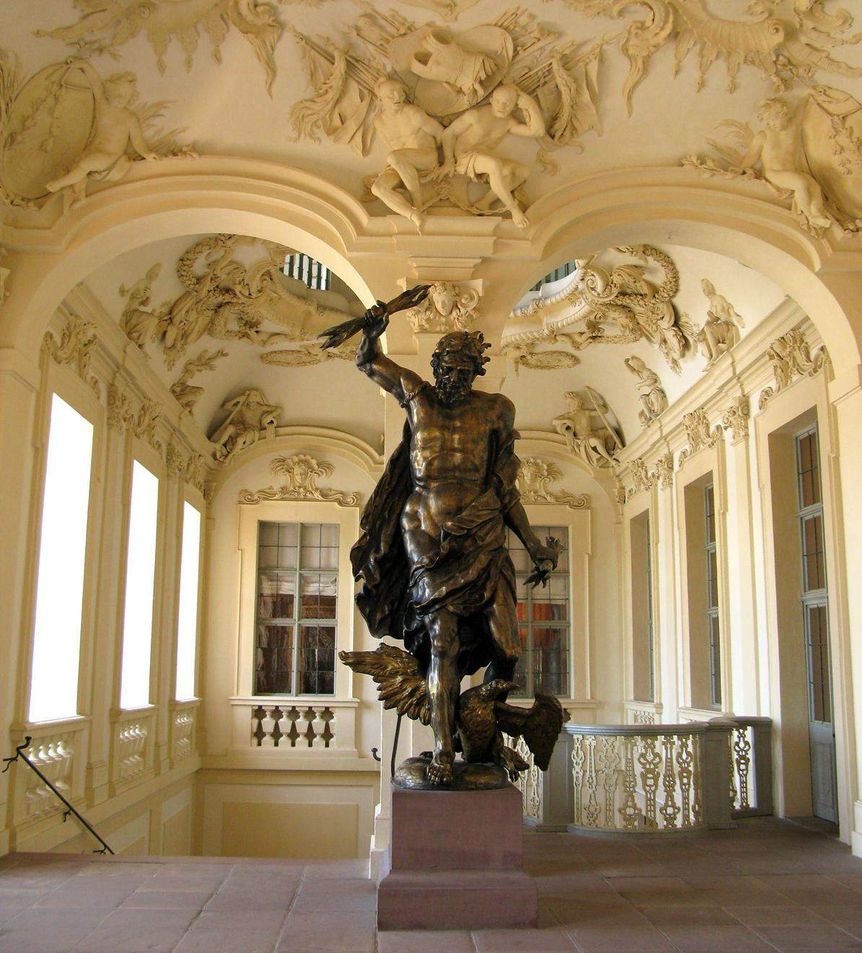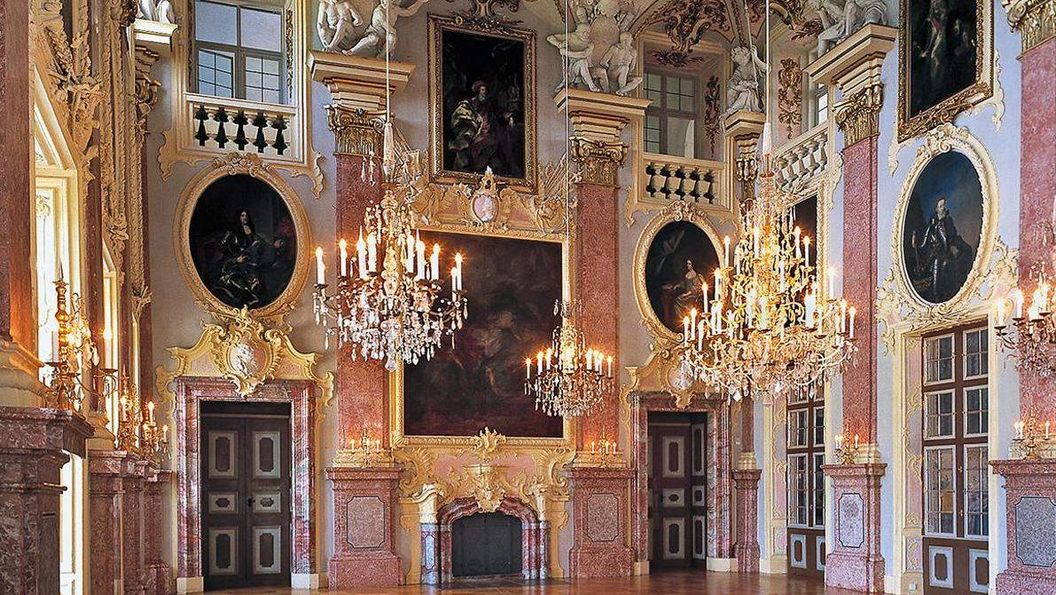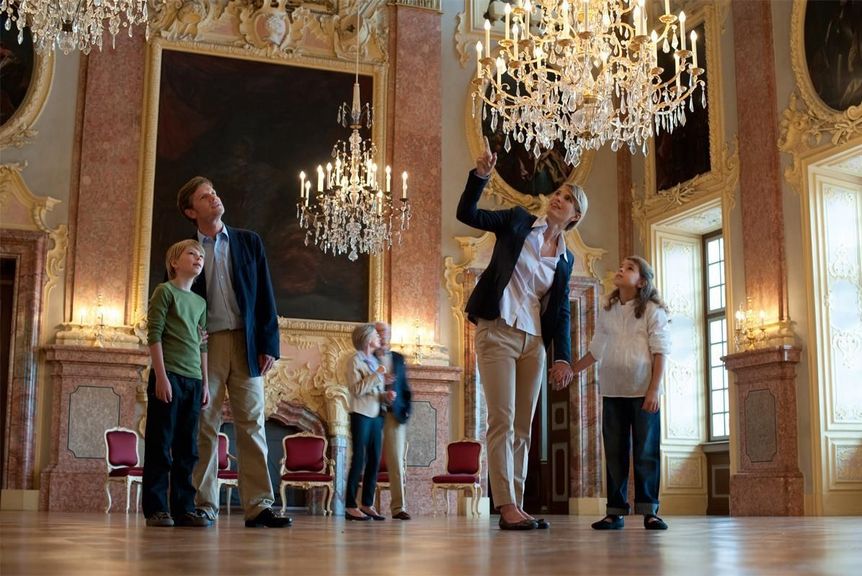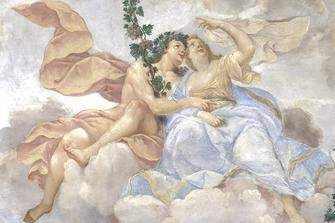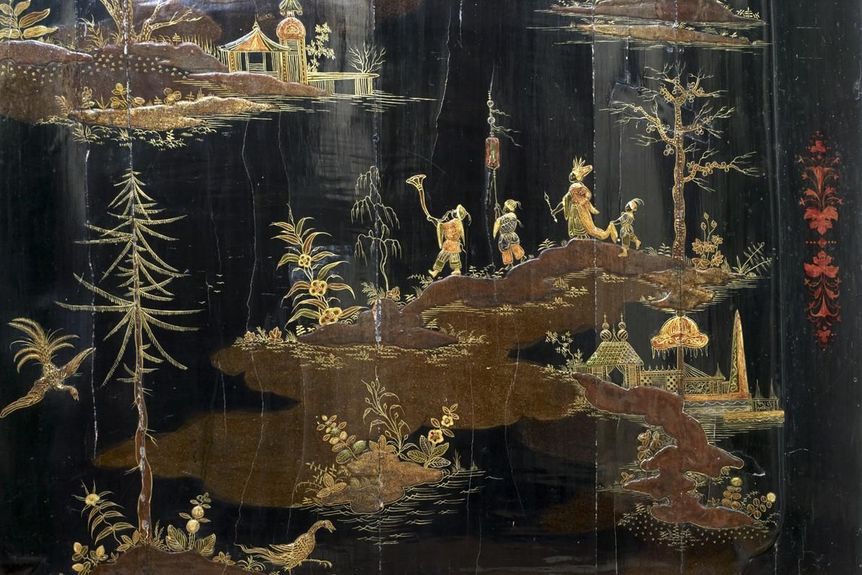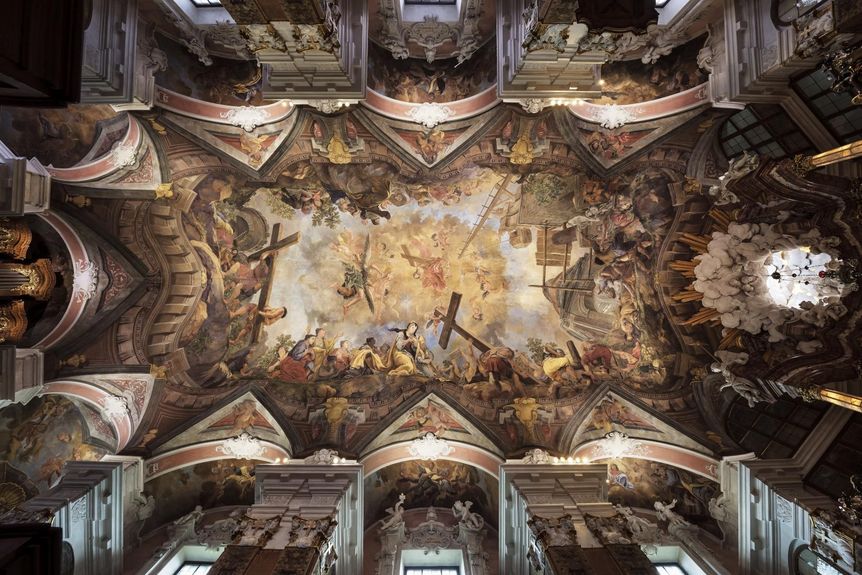Türkenlouis’ ancestral hall
The largest and most magnificent room is the Ahnensaal (ancestral hall). The many frescoes depict not only the margrave’s ancestors, but also a host of captured Ottomans – commemorating the margrave’s victories in the wars against the Ottoman Empire, which had also earned him the nickname Türkenlouis (Louis of the Turks – Louis being the French version of Ludwig). Rastatt Residential Palace offers fascinating insights into the portrayal of absolutist rulers and courtly pomp and circumstance.
The Baroque complex has withstood the test of time almost unscathed. Today, the palace gardens are open to the public, with a modern slant on Baroque garden design. The palace and gardens, the Military History Museum and the commemorative site for freedom movements in German history, which are both located in the palace, all make Rastatt Residential Palace well worth a visit.



